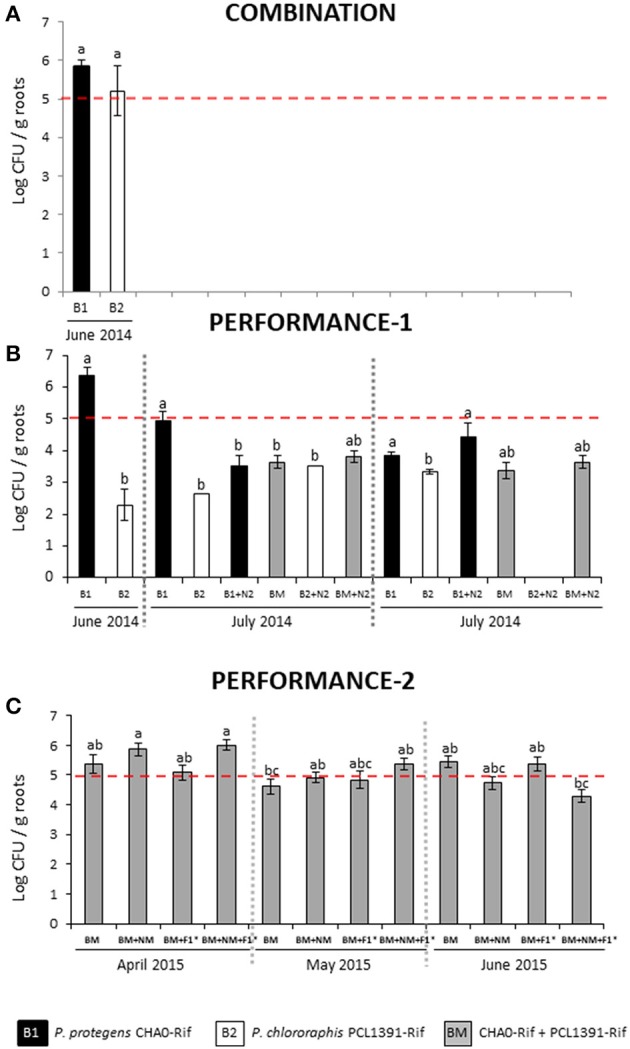Figure 1.

Survival of Pseudomonas protegens strain CHA0-Rif (B1) and Pseudomonas chlororaphis strain PCL1391-Rif (B2) on wheat roots in the COMBINATION (A), PERFORMANCE-1 (B), and PERFORMANCE-2 (C) field trials. Bacterial strains were inoculated individually or in combinations with the entomopathogenic nematode (EPN) Heterorhabditis bacteriophora (N2), an EPN mixture (NM; comprising Heterorhabditis megidis, H. bacteriophora, and Steinernema feltiae) and the arbuscular mycorrhizal fungus Rhizoglomus irregularis (F1*). Inoculants were monitored by selective plating on KMB supplemented with rifampicin (100 μg/ml) and cycloheximide (100 μg/ml) at three different time points following seed furrow inoculation. The dashed red line indicates the generally agreed threshold (~105 CFU per g root) required to provoke beneficial plant effects with plant growth-promoting pseudomonads (Haas and Défago, 2005). Bar graphs show means of log10 transformed CFU values per gram of dry roots weight (± SEM). Significant differences between treatments were calculated with one-way ANOVA (significance level P < 0.05) followed by the Tukey post-hoc test, or with a non-parametric Kruskal-Wallis test (significance level P < 0.05), followed by Dunn's test for post-hoc comparisons. Different letters indicate statistical significance at P < 0.05. Inoculants were not detected in the buffer and border zones of the field assays. No Rifampicin-resistant background population was detected at the field sites.
